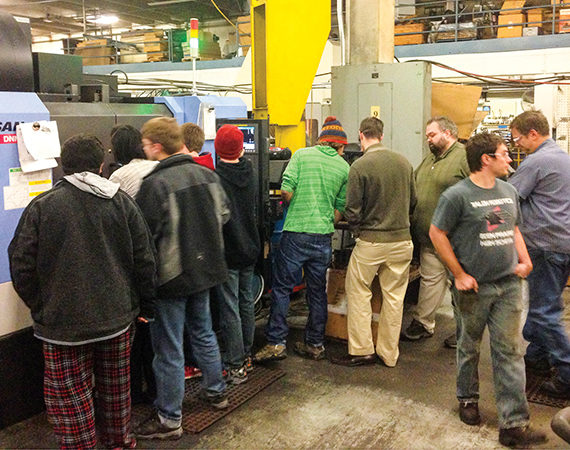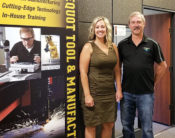The emerging technological breakthrough of robotics in the manufacturing industry has inspired a Minnesota precision manufacturing company to invest in the next generation of innovators: high school robotics teams.
Continental Engineering and Manufacturing (CEM), a Chaska-based machine shop, started partnering with high school level robotics programs eight years ago.
“We support robotics teams because we see value in fueling students’ passions for science and technology,” Eric Andersen, president of CEM, says. “It also gives us the opportunity to expose them to manufacturing.”
CEM is a company of 55 employees that specializes in drive shaft assemblies, components, custom machined parts, and weldments. It financially sponsors Eden Prairie High School’s “Talon Robotics” team and Frazee High School’s “Kaotic Robotics” team, both which have around 40 high school members who work together each school year building robots that compete in international FIRST Robotics competitions. CEM donates machining time to help students build their robots, as well.
“The students are in charge of drawing out and designing the components of their robots, and then we offer a show-and-tell on which machines produce their parts,” Andersen says. “We also offer summer apprenticeships so students can get hands-on experience and learn what it takes to actually produce a robotic part they design. It gets them thinking about their next career steps.”
The company’s apprenticeship program consistently attracts robotics team members, and currently two former high school robotics team members work at CEM’s facility full time. Andersen was impressed with both the soft and hard skills the alumni brought to the company.
“Not only do robotics teams teach high schoolers STEM skills (science, technology, engineering, and math), but they also learn creativity and problem-solving,” Andersen says. “When their robot doesn’t perform as expected, they have to think outside of the box, communicate with each other, and come up with solutions.”
The Talon Robotics team is led by students and guided by mentors. Under the leadership of four student captains, two engineering and two business, team members participate in the computer aided design portion of building the robot and the business side that involves community outreach and fundraising. Adult mentors are available to guide students on further leadership, communication, and collaboration skills development.
With the help of adult volunteers and mentors, the Kaotic Robotics team is comprised of students interested in STEM but also programming, business, and marketing. These interests blend together well as team members both build their robots and raise funds through corporate sponsorship and other fundraising activities.
Because building and competing with a multifunctional, electronic robot is expensive (Talon Robotics has a budget of $50,000 to $55,000 a year!), the teams rely on company sponsorships and fundraising to support their love of robotics.
Students on the teams oversee raising the money themselves, and they often put on demonstrations at various companies to attract sponsors. They show off their robot—and sometimes even let others try driving it—and share why robotics competitions are valuable for students and sponsors alike. Students gain skills essential in any successful company, skills of leadership, marketing, teamwork, and communication, and sponsors can promote their company to a wide audience of viewers at the competition events, both live and via webcam.
Each team’s budget accounts for materials and tools to construct their robots, but also pays for materials to build practice fields where the robots are tested. Additionally, the budget includes the cost of competition registration and transportation.
FIRST Robotics competitions attract high school robotics teams from all over the country and even overseas. Participants design and build industrial-size robots that weigh up to 125 pounds and compete in field games from scoring balls into goals to flying discs into goals and hanging inner tubes on racks to balancing on balance beams.
“Supporting our local high school robotics teams so they can experience the excitement of a sport with the rigors of science and technology has great value,” Andersen says. “I want to encourage other machining and fabricating companies to get involved with their local high school teams. It is well worth it.”
…
Featured in the Fall 2019 issue of Enterprise Minnesota magazine.

